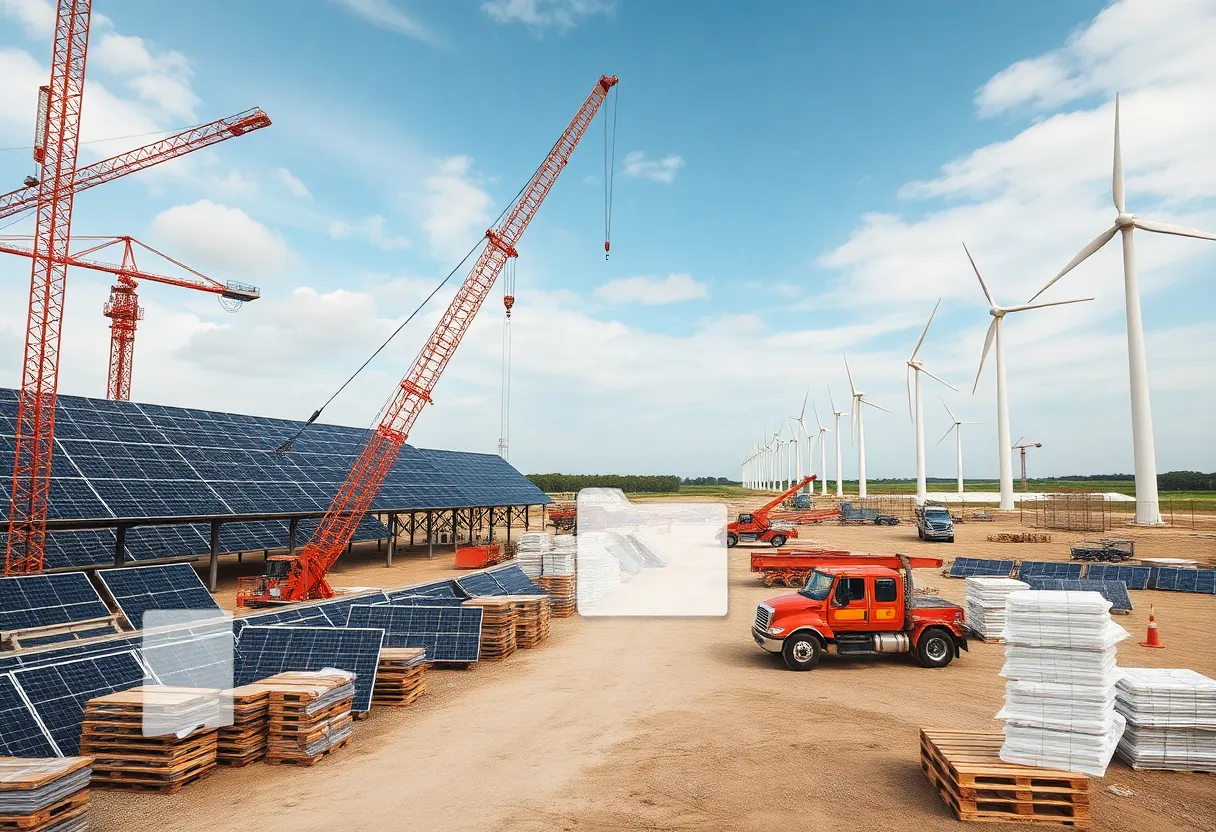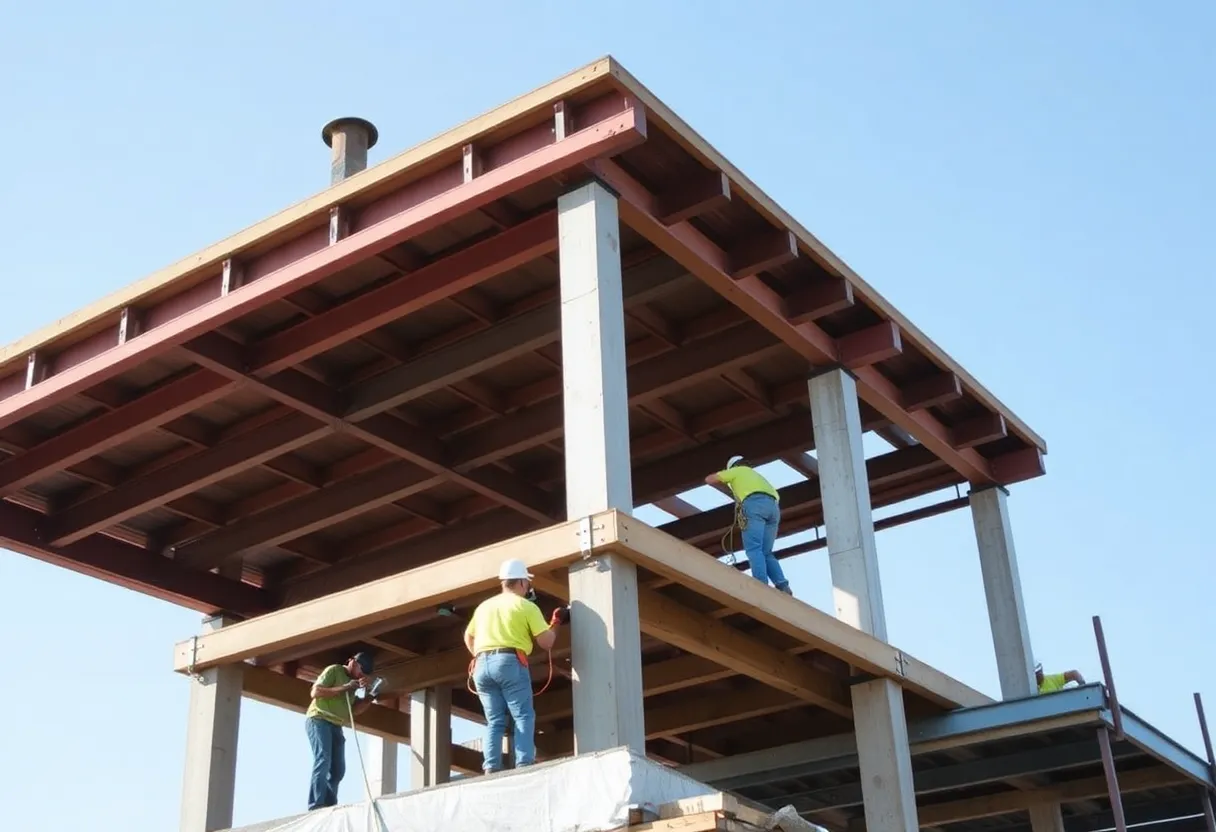United States, August 15, 2025
News Summary
Crayhill Capital has introduced a Tax Equity Bridge Lending programme offering facilities from $50 million to $500 million to help U.S. renewable developers meet tightened federal tax-credit qualification rules. The product pairs short-term bridge loans against anticipated tax-equity commitments with pre-construction and construction financing, preferred-equity step-up support, and equipment procurement assistance. Designed to accelerate meaningful construction activity while permanent tax-equity and construction financing are finalized, the programme aims to bridge timing gaps caused by stricter documentation and construction tests and to help developers secure long-lead components and close construction financing more quickly.
Crayhill Capital rolls out $50m–$500m Tax Equity Bridge Lending programme to help U.S. renewables meet new tax-credit deadlines
What happened: A new Tax Equity Bridge Lending (TEBL) programme has been launched to help U.S. renewable energy developers navigate tightened federal tax-credit rules tied to construction timetables. The programme offers facilities sized between $50 million and $500 million and pairs bridge loans against future tax equity commitments with a range of pre-construction and construction financing tools.
Why it matters now
Federal tax-credit rules now require qualifying projects either to begin construction by 4 July 2026 or be placed in service by 31 December 2027 in order to claim investment tax credits (ITC) or production tax credits (PTC). New guidance and executive orders may raise the bar further by asking projects to show a “substantial portion” of work completed rather than counting early, preliminary actions as the start of construction. Those timing and documentation demands have increased pressure on developers to accelerate pre-construction and procurement activities.
What the TEBL programme provides
- Bridge loans tied to future tax equity to enable developers to begin qualifying construction activities now.
- Pre-construction and construction capital, including development loans and construction equity.
- Preferred-equity step-up capital to shore up balance sheets during the build phase.
- Equipment procurement assistance to secure critical long-lead components needed to show substantial progress.
- Facilities that are flexible in size, targeted at projects requiring between $50m and $500m of capital.
How the programme is positioned
The programme aims to give developers a more direct path to close construction financing and monetize tax credits by providing capital tied to confirmed or expected tax-equity commitments. It is presented as part of a broader expansion of pre-construction financing options intended to let developers initiate meaningful construction work immediately while a longer-term financing package is finalized.
Context on regulatory and market pressures
Industry observers point to tightened rules and recent legislative proposals as drivers of an “unprecedented” pace in project schedules. Separately, rising power demand, including increases tied to artificial intelligence and electrification trends, is creating additional urgency to scale renewable capacity quickly.
Background on the firm behind the programme
The manager behind the lending product has been active in asset-based finance since the mid-2010s. Since 2015 it reports deploying more than $4 billion across more than 50 transactions. A recent flagship fund closed at approximately $1.31 billion, above its prior target, and the firm is described as operating an asset-based finance platform with a multi-product approach for energy sector investments.
Relevant past deals and relationships
In a prior financing announced in 2021, the manager provided $275 million of flexible capital to a renewable developer to advance projects into construction and scale a solar and storage platform. That earlier arrangement highlighted the use of flexible, project-level capital to ready pipelines and mobilize large scale deployments over several years.
Other practitioner notes
Company leadership has discussed related risk-transfer tools and market evolution in recorded panels and conversations, touching on synthetic risk transfer (SRT), investor concerns, and the changing roles of banks and non-bank capital providers. Those conversations underline the broader search in the market for financing structures that can handle compressed schedules and shifting regulatory tests for tax-credit qualification.
Implications for developers
The new TEBL option could be useful for developers who need to show rapid, substantive progress to meet tax-credit rules while final tax-equity investors and construction lenders are still negotiating. Key trade-offs for developers include pricing, the strength of the future tax-equity commitment, alignment of timelines, and how much procurement and construction activity the bridge lender requires to advance funds.
Bottom line
The programme is a financing tool aimed at closing a timing gap between the need to begin qualifying construction quickly and the often slower process of securing traditional tax-equity and construction financing. Its impact will depend on uptake by developers, the evolution of regulatory tests for starting construction, and broader market appetite for tax-equity-linked bridge financing.
FAQ
What is Tax Equity Bridge Lending (TEBL)?
TEBL is a short-term financing solution that advances capital against expected future tax-equity investments, allowing developers to start or accelerate qualifying construction activities before permanent tax-equity and construction financing is fully closed.
Who can use the new TEBL facilities?
The facilities are designed for developers of solar, wind and battery projects that need pre-construction and construction capital to meet federal tax-credit timing rules and to secure equipment and other long-lead items.
What are the size and scope of the facilities?
Facilities are sized between $50 million and $500 million, and they combine bridge lending with development capital, construction equity and preferred-equity step-up support.
Which tax-credit deadlines are most relevant?
Qualifying projects generally must begin construction by 4 July 2026 or be placed in service by 31 December 2027 to claim federal ITC or PTC benefits. Recent guidance may require showing a substantial portion of work completed to count as having begun construction.
Does the programme help with equipment procurement?
Yes. The offering includes assistance aimed at securing critical equipment, which can be essential for demonstrating progress and avoiding supply-chain delays.
Key features at a glance
| Feature | Details |
|---|---|
| Facility size | $50m–$500m |
| Primary use | Pre-construction, construction financing, and bridge to tax equity |
| Financing types included | Bridge loans, development capital, construction equity, preferred equity step-up |
| Support services | Equipment procurement assistance |
| Relevant deadlines | Begin construction by 4 July 2026 or placed in service by 31 December 2027 |
| Intended technologies | Solar, wind, battery storage |
| Firm background | Multi-transaction experience since 2015; reported $4bn+ deployed; recent fund close ≈ $1.31bn |
Deeper Dive: News & Info About This Topic
Additional Resources
- Alternative Credit Investor: Crayhill Capital launches finance solution for US green energy projects
- Wikipedia: Tax Equity Bridge Lending
- IREI: Crayhill Capital Management closes third flagship fund with more than $1.3B
- Google Search: Crayhill Capital Management third flagship fund 1.31 billion
- PR Newswire: Crayhill provides $200M secured receivables financing facility to Stenn Technologies
- Google Scholar: Crayhill Stenn receivables financing 200 million
- PR Newswire: Urban Grid closes $275M debt refinance provided by Crayhill Capital Management
- Encyclopedia Britannica: Urban Grid debt refinance Crayhill
- ION Analytics / Mergermarket: Carlos Mendez on trends in SRT
- Google News: Carlos Mendez Crayhill SRT synthetic risk transfer
Author: Construction FL News
The FLORIDA STAFF WRITER represents the experienced team at constructionflnews.com, your go-to source for actionable local news and information in Florida and beyond. Specializing in "news you can use," we cover essential topics like product reviews for personal and business needs, local business directories, politics, real estate trends, neighborhood insights, and state news affecting the area—with deep expertise drawn from years of dedicated reporting and strong community input, including local press releases and business updates. We deliver top reporting on high-value events such as the Florida Build Expo, major infrastructure projects, and advancements in construction technology showcases. Our coverage extends to key organizations like the Associated Builders and Contractors of Florida and the Florida Home Builders Association, plus leading businesses in construction and legal services that power the local economy such as CMiC Global and Shutts & Bowen LLP. As part of the broader network, including constructioncanews.com, constructionnynews.com, and constructiontxnews.com, we provide comprehensive, credible insights into the dynamic construction landscape across multiple states.





